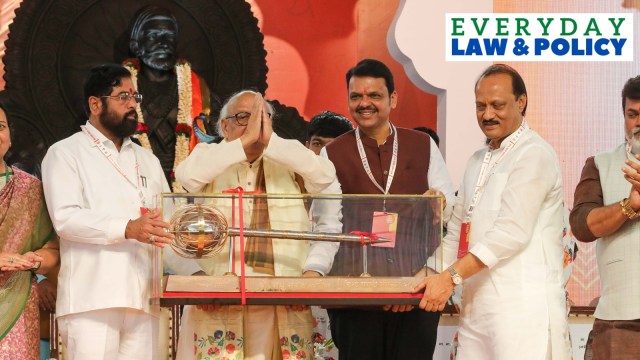Security downgraded for Maharashtra MLAs: who decides the level of security, and how?
Based on the seriousness and immediacy of the perceived threat, protected individuals are assigned security in the X (likely threat), Y (continuous threat), Y-plus (grave threat) or Z (impending threat) categories. But it is alleged that political motivations often drive this decision.
 After the Eknath Shinde-Devendra Fadnavis government came to power in June 2022, the security of Maha Vikas Aghadi (MVA) MLAs was downgraded. (Express photo by Arul Horizon)
After the Eknath Shinde-Devendra Fadnavis government came to power in June 2022, the security of Maha Vikas Aghadi (MVA) MLAs was downgraded. (Express photo by Arul Horizon)The Maharashtra government last week downgraded the security cover of several MLAs. State governments increase or decrease the security of individuals from time to time based on their assessment of the threat these individuals face at the time.
Given that security is often seen as a state-provided perk that confers bragging rights on the beneficiary, a decision to withdraw cover is sometimes perceived as being politically motivated.
How does the state decide who should get security, and of which level?
What are the security categorisations used by police?
The first step is to identify the individuals who face threats either directly or due to the positions they occupy. The most vulnerable individuals are mostly politicians, actors, and other public figures.
Based on the seriousness and immediacy of the perceived threat, these individuals are assigned security in the X (likely threat), Y (continuous threat), Y-plus (grave threat) or Z (impending threat) categories.
What security cover is provided under each of these categories?
The personnel and resources assigned to the protectee are graded in accordance with the magnitude of the perceived threat.
X: A person with X category security is accompanied by a guard 24X7. Most Maharashtra MLAs have X category security.
Y: In addition to the 24X7 security guard, persons with Y security have three armed guards posted outside their residence at night. Most Cabinet Ministers have Y security.
Y-plus: An armoured vehicle is deployed for these protectees. A well-known recipient of security at this level is actor Salman Khan, who has received threats from the Lawrence Bishnoi gang.
Z and Z-plus: There are 22 personnel in the security detail of these protectees, along with armoured vehicles. This category of security is usually provided to the Chief Minister and to certain private individuals such as industrialist Mukesh Ambani.
Who decides what category of security should be provided to a particular individual?
These decisions are taken based on the security report provided by the State Intelligence Department (SID) of the Maharashtra Police, which mentions the level of threats faced by the individual concerned.
Within the city, the Protection and Security Wing of the Mumbai Police takes the call on security cover; at the state level the Chief Secretary, Additional Chief Secretary (Home) and Director General of Police decide the level of security based on inputs provided by intelligence agencies.
Decisions are not permanent, and are constantly reviewed on the basis of periodic assessments of the threat to the individual. Based on these reviews, the security cover provided to an individual can be upgraded, downgraded, or left unchanged.
The most recent downgrades ordered by the Maharashtra government followed a meeting that decided to reduce the cover provided to several MLAs from Y or Y-plus to X. An official said that several of these MLAs did not actually face a threat.
Why are there allegations of political interference in the security process?
It happens frequently that new governments reduce the security of outgoing Ministers or MLAs of the previous party in government.
After the Eknath Shinde-Devendra Fadnavis government came to power in June 2022, for instance, the security of Maha Vikas Aghadi (MVA) MLAs was downgraded.
The security of MLAs of the Shinde faction of the Shiv Sena, on the other hand, was increased to Y and Y-plus on the ground that they could face threats from the Uddhav Thackeray Sena.
In the latest security review, the security of several Shinde Sena MLAs along with some BJP and NCP (Ajit Pawar) MLAs has been reduced, leading to some chatter about an intensification of the feud between Mahayuti partners BJP and the Shinde Sena.



- 01



































